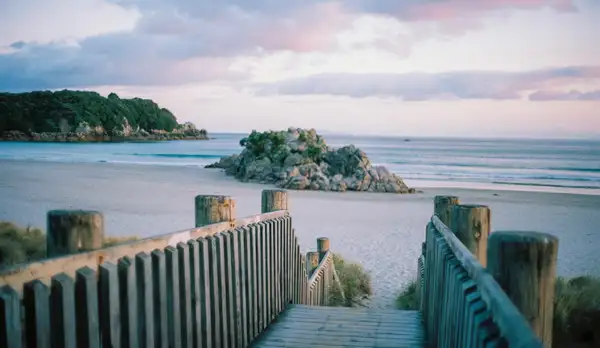Ngā Kaunihera i Aotearoa
-
Councils in Aotearoa



How different councils are named, structured and operate.
Regional versus territorial versus unitary… and what about wards and boards?
Confused by all the different language and names used to describe councils/kaunihera? You're not alone!
There are three ‘types’ of councils/kaunihera in Aotearoa. Local government in Aotearoa is made up of 78 territorial, regional, and unitary councils.
Their features are summarised below.
| Regional Councils | Serve a large region like Otago, Bay of Plenty, Waikato. |
Aotearoa New Zealand has eleven regional councils. Regional councils are headed by a chairperson. As at 2022, six have Māori wards – more on that below. |
Regional councils play a core role in the management of natural resources including land, air, and water/wai; supporting biodiversity and biosecurity; providing regional transport services and building more resilient communities in the face of climate change and natural hazards. |
|---|---|---|---|
| Territorial Councils or Authorities |
City councils serve urban areas like Wellington, Dunedin, Christchurch. District councils serve a mix of rural and urban areas. |
Aotearoa New Zealand has eleven city councils and fifty district councils. Territorial councils are headed by a mayor. Many have community boards. As at 2022, 26 have Māori wards. |
Territorial authorities are responsible for a wide range of local services including roads, water/wai reticulation, sewerage and refuse collection, libraries, parks, recreation services, local regulations, community and economic development, and town planning. While the roles of territorial and regional councils are different, there is often a lot of overlap between their work given they cover the same geographical area. |
| Unitary authorities | Territorial authorities with regional council responsibilities. |
Aotearoa New Zealand has six unitary authorities. Unitary authorities are headed by a mayor. Many have community boards. Auckland has 21 local boards. As at 2022, three unitary authorities have Māori wards. |
These are essentially a combination of territorial and regional councils and play both roles in the areas they serve. We have six unitary authorities – Auckland Council, Chatham Islands Council, Gisborne District Council, Marlborough District Council, Nelson City Council and Tasman District Council. |
Find council maps and websites
Māori Wards and constituencies
The Māori wards and constituencies sit alongside the general wards of each city or district. Similar to the Māori Parliamentary seats, Māori wards/constituencies are areas where only those on the Māori Parliamentary Electoral Roll can vote for the candidates in that ward/constituency.
They enable councils/kaunihera to better honour the principle of partnership committed to in Te Tiriti o Waitangi and provide greater opportunities for Māori to contribute to the discussion/kōrereo and decision-making.
At the time of the 2022 elections there were thirty-five Māori wards and constituencies across Aotearoa.
Community Boards
A community board serves as a conduit between a community and its council/kaunihera. They typically represent a smaller area within their local council/kaunihera, to ensure smaller communities’ voices aren’t lost in the big picture conversations/kōrero.
Most members are elected by their communities during local body elections although council members can also be appointed to a community board.
There are now around 110 community boards in Aotearoa, ranging in size from those representing only a few hundred residents to more than 60,000 residents.
Local Boards
Local boards/poari ā-rohe provide local leadership and make decisions on local issues and services. Local boards and the governing body are both responsible and democratically accountable for the decision-making of their unitary authority with responsibility for types of decisions allocated between them. In Tāmaki Makaurau Auckland local boards are responsible for areas like local events, local parks, libraries and other community facilities, and have the power to develop local bylaws or propose local targeted rates.
To date, there are 21 local boards, exclusively in the ‘supercity’ council/kaunihera of Tāmaki Makaurau Auckland. Other unitary councils may apply to the Local Government Commission to establish local boards in their areas.
Who's who in the council/te kaunihera?
Mayors and Chairs
In district and city councils/kaunihera and unitary authorities, the community votes for a mayor whose role it is to be a leader, providing direction and vision for the council/te kaunihera and community.
Regional councils have a chair rather than a mayor, but they too act as leaders. A key difference is that the chair is elected by their fellow councillors.
Mayors and chairs have a lot of responsibility and are involved in a range of things including heading the development of planning documents, guiding decision-making, chairing meetings, assigning responsibilities to other councillors, creating policy, leading the community through crisis, meeting with the community and advocating for them in national conversations/kōrero.
Councillors
Councillors are people voted in by their community. The role of councillor is incredibly varied — they act as representatives and advocates of their community, take part in crucial decision-making and help guide policy.
They might be part of a standing committee that focuses on a particular topic, such as the environment or transport, or they might have a portfolio of topics they focus on. A lot depends on how the council/te kaunihera itself is structured, meaning the role of councillor looks different from place to place. The chair can be changed at any time within the three-year term.
The number of elected members is usually proportional to the population of the area, although currently only Auckland Council/Te Kaunihera o Tāmaki Makaurau has more than 20.
Council/kaunihera CEOs
Each council/kaunihera employs a Chief Executive Officer (CEO) to run the everyday business of the council. It is the mayor’s responsibility appoint the CEO and this is the only role a council/kaunihera plays in recruitment.
Each CEO is appointed for a five-year term. The CEO is responsible for employing, managing and overseeing all other staff on behalf of the council/kaunihera.
Council/kaunihera staff
There are many staff working at council/kaunihera to ensure it runs effectively and efficiently. These roles differ from one area to another and can range from policy analysts and communications advisors to arborists and dog control officers.
Exactly how many people a council/kaunihera employs varies hugely depending on the size of the community they represent, resources and needs.
-
Council maps and websites
 A comprehensive list of councils around the country.
A comprehensive list of councils around the country. -
How councils work
 All the inner workings of councils from regulation to community engagement, standing orders to the Long-term Plan.
All the inner workings of councils from regulation to community engagement, standing orders to the Long-term Plan. -
Elected member profiles
 Meet some local government elected members. Learn about their commitment to serving their communities.
Meet some local government elected members. Learn about their commitment to serving their communities.